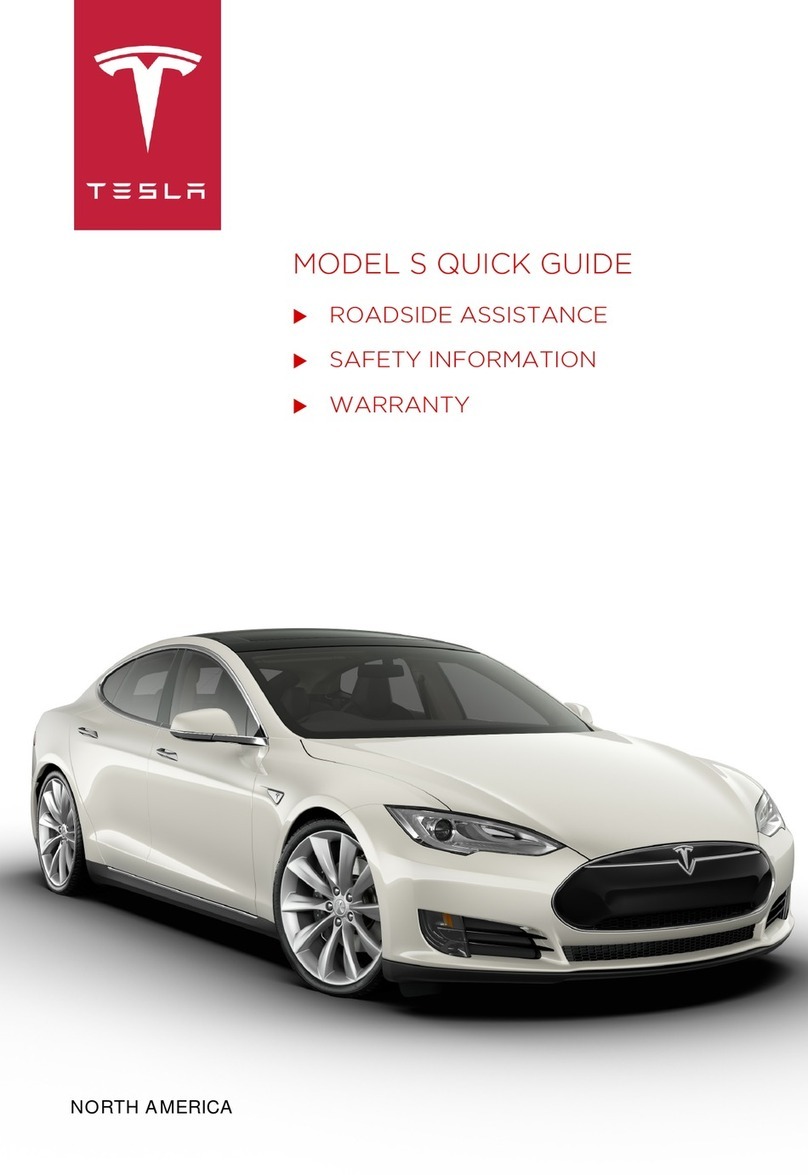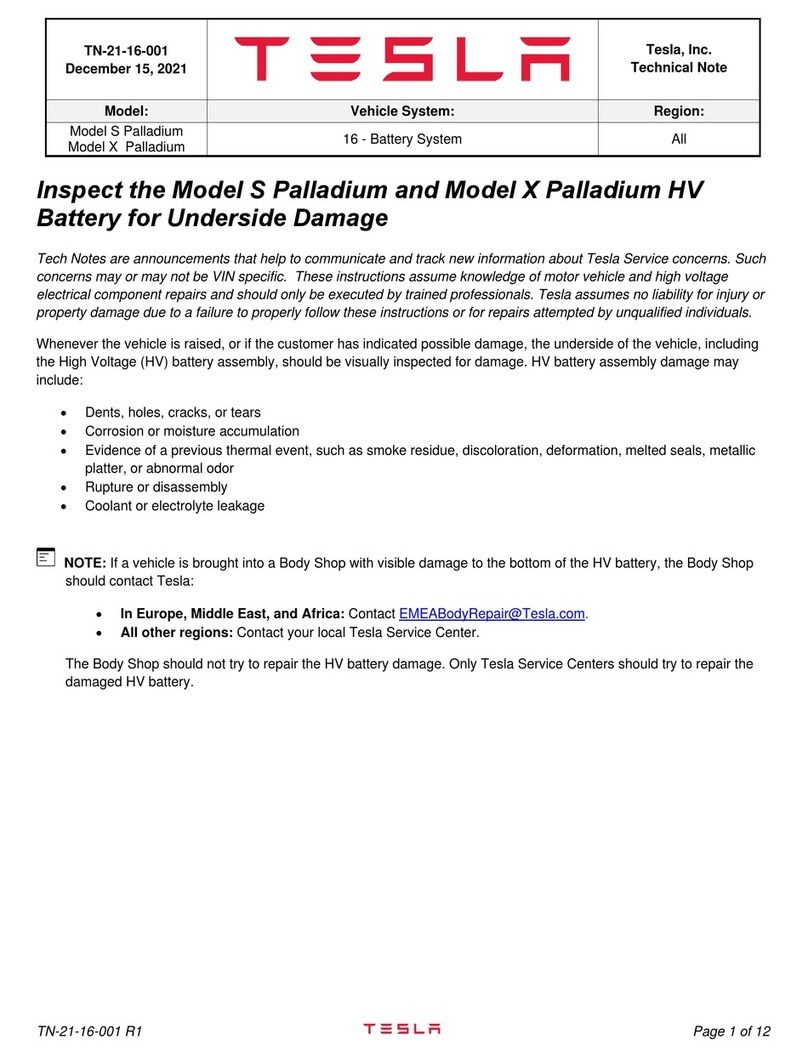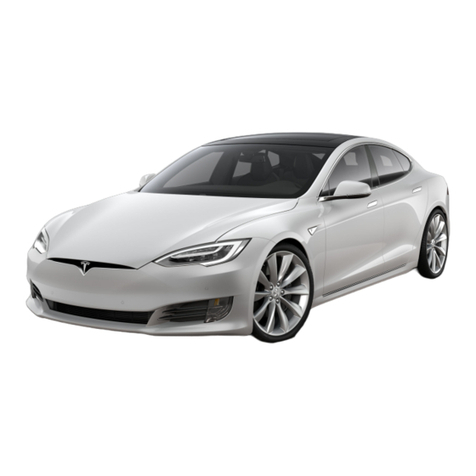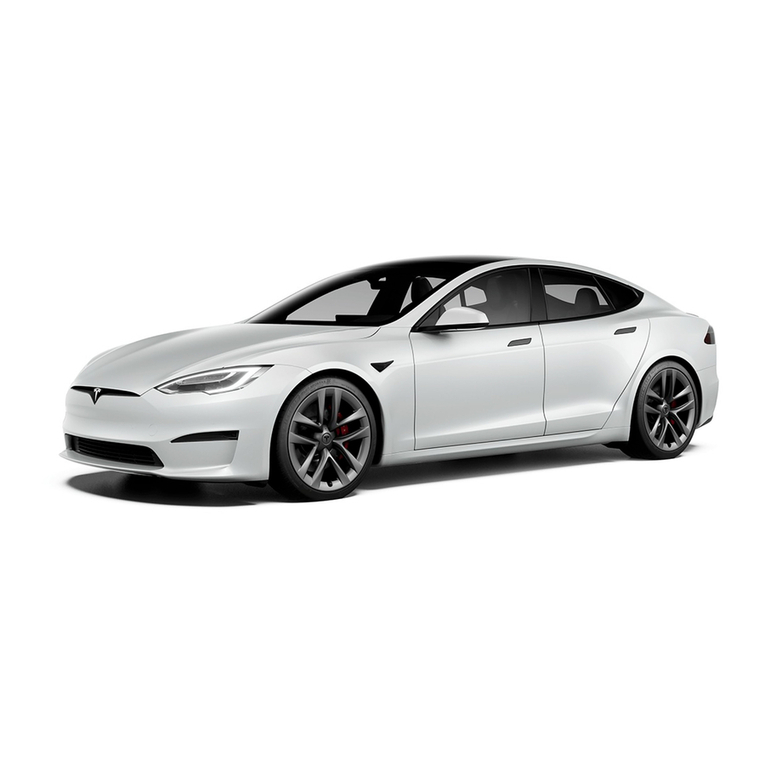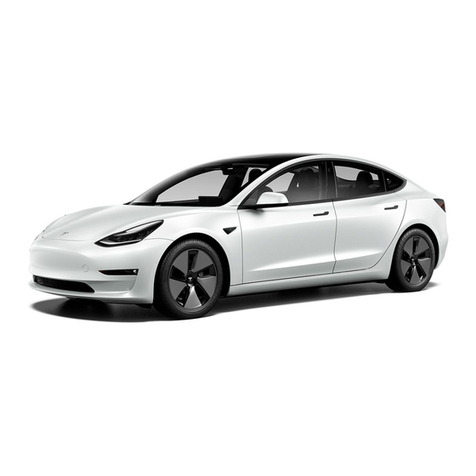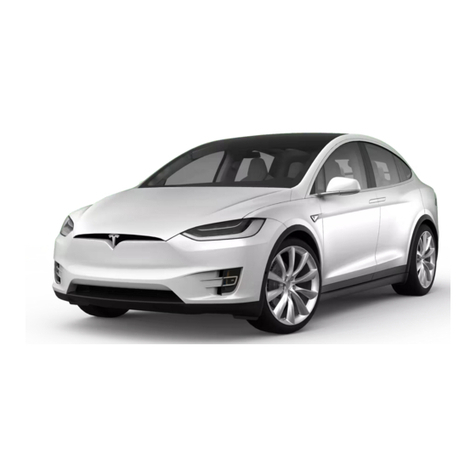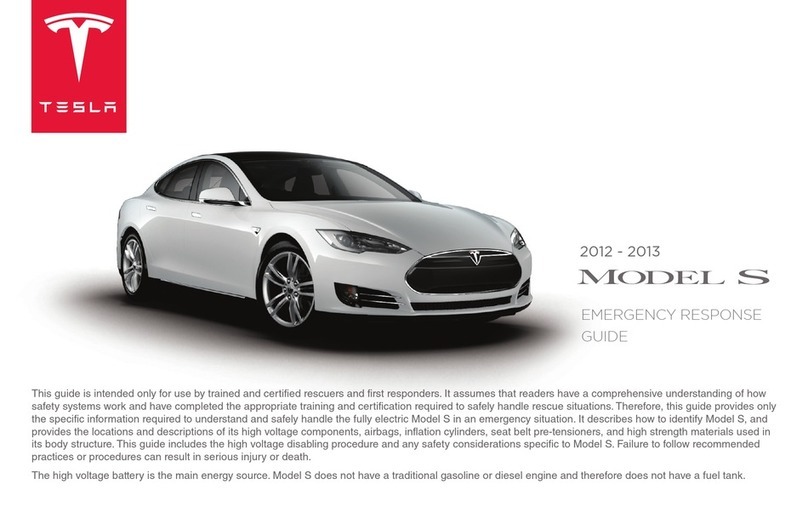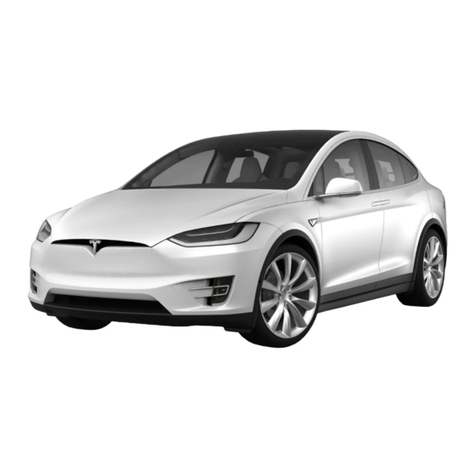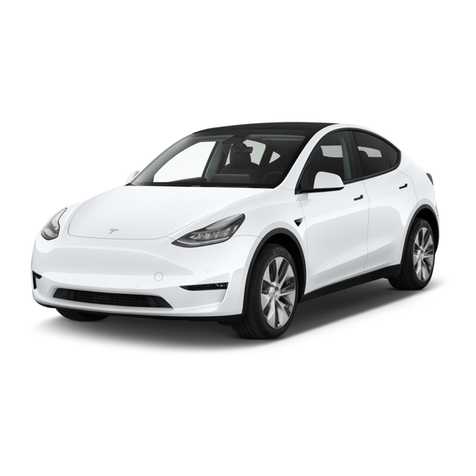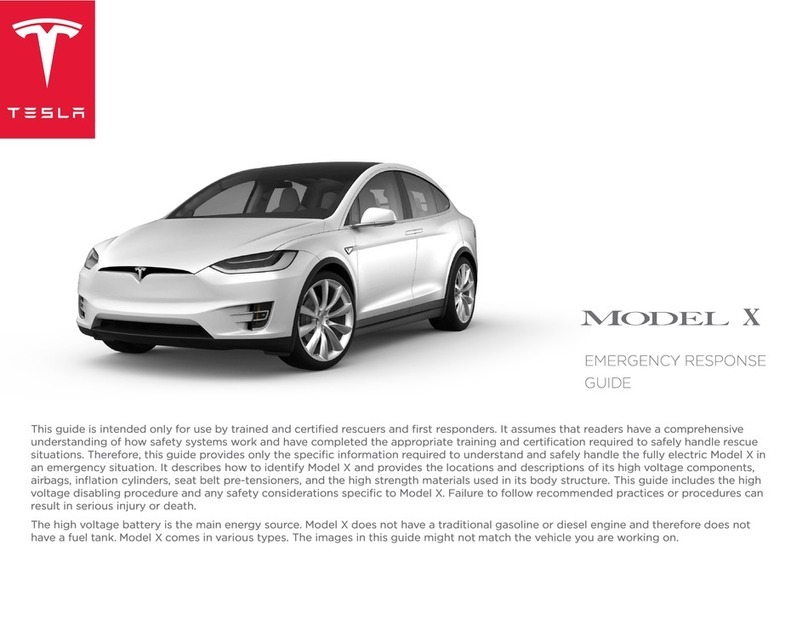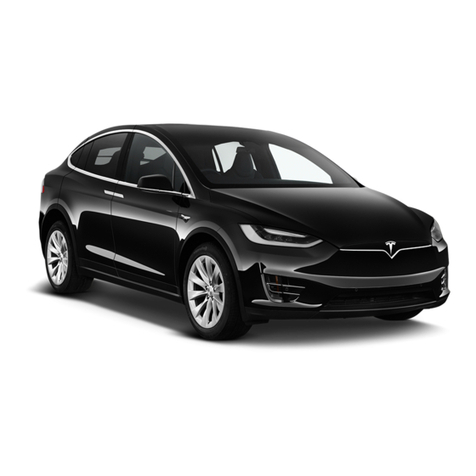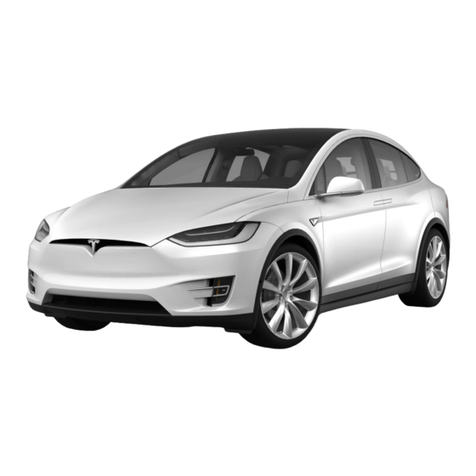Important notes about your vehicle
1-3Introduction
About this manual
This owner’s manual contains a great deal
of information you need to know about a
Tesla Roadster. We urge you to read it
carefully and familiarize yourself with the
vehicle before driving.
For your own safety, follow the
instructions and warnings contained in
this manual. Ignoring them could result in
damage to the vehicle or personal injury
to you or others. Vehicle damage caused
by failure to follow instructions is not
covered by the Vehicle Warranty.
Keep this manual in your Roadster as a
reference for the safe and enjoyable use of
your Tesla Roadster. Should you sell your
vehicle, be sure to provide this manual to
the new owner.
All specifications and descriptions are
accurate at the time of printing. Because
improvement is a constant goal at Tesla
Motors, we reserve the right to make
changes at any time, without notice and
without obligation.
This manual applies to all Roadster 2 and
Roadster Sport vehicles. As a result, you
may find some explanations for
equipment or options not installed on
your vehicle. When required, Tesla Motors
distributes an addendum to provide
updated information.
An effective way to find the information
you need is to use the index at the back of
this manual.
If you are unable to find the information
you need, the following additional
documents are included in your owner’s
package:
•Quick Reference - a summarized
version of this document allowing you
to quickly familiarise yourself with the
vehicle and its features.
•Touch Screen Users Manual - describes
how to use the screens to display
important information while parking,
driving, and charging the vehicle
•Roadside Assistance Guide - describes
the Tesla Motors Roadside Assistance
program and provides instructions on
how to transport the vehicle
•Warranty Guide - details the Vehicle
Warranty
In addition to the documents in your
owner’s package, Tesla provides the
following documents:
•Mobile Connector Users Manual -
describes how to the use a Tesla
Motors mobile connector.
•OEM Audio & Navigation System
manual - describes how to use the
vehicle’s audio and navigation system.
This manual is provided in your
vehicle’s trunk.
•High Power Wall Connector Manual -
provides step-by step instructions on
the installation and use of the Tesla
Motors High Power Wall Connector.
When required, Tesla Motors may also
include an addendum in the owner’s
package if your vehicle differs from what
is in the manuals. If you are missing a
document, please contact Tesla Motors.
Symbols glossary
The following symbols used within this
manual call your attention to specific
types of information:
WARNING: Indicates a situation in
which serious bodily injury or death
could result if the warning is ignored. ▲
Caution: Indicates a situation in
which bodily injury or damage to
your vehicle, or both, could result if the
caution is ignored.
Identifies items that must be
disposed of safely to prevent
unnecessary damage to the environment.
Note: A note provides useful supporting
information and sometimes suggests how
to make better use of your vehicle.

